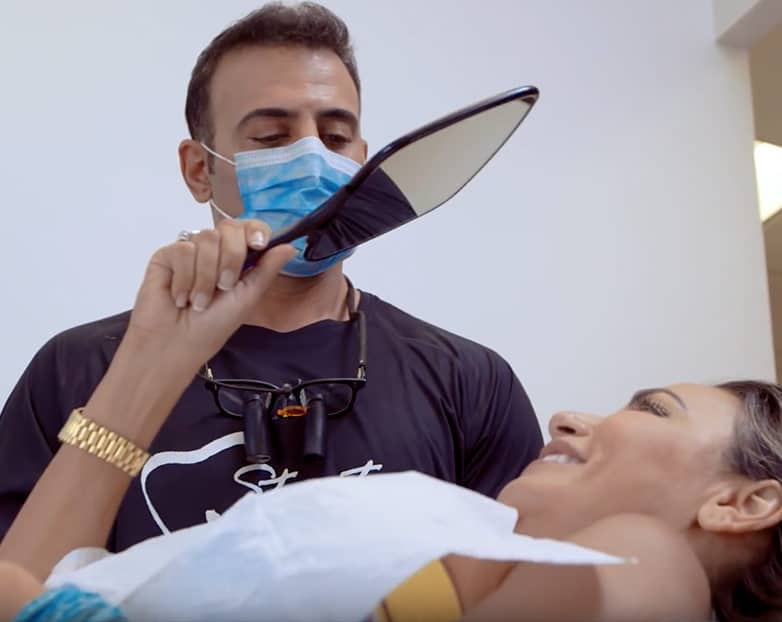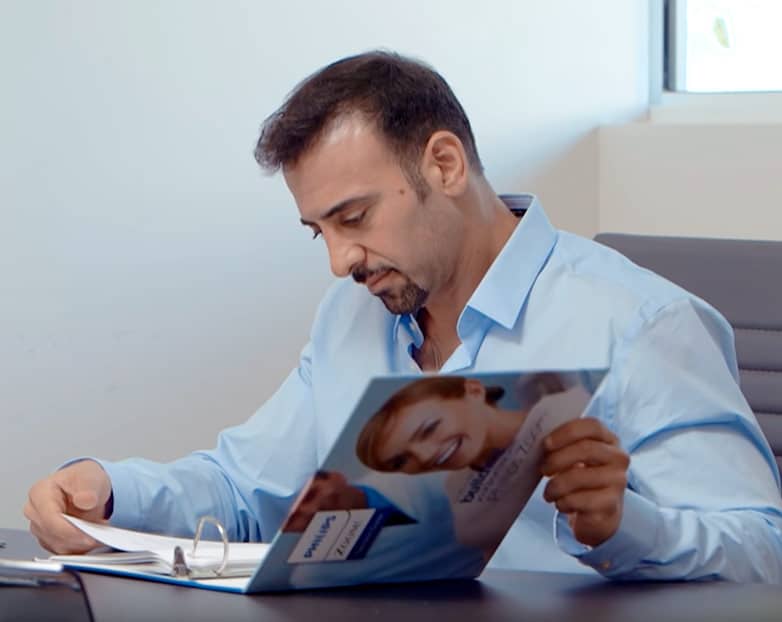Dentures are removable appliances or restorations that replace several or all of the teeth in an arch or the entire mouth. First, we will discuss partial dentures then we will discuss complete dentures.
Partial dentures or partials are fabricated to replace one or more teeth in an arch. Partials are rarely made to replace one or two teeth as it is somewhat impractical to make such a large appliance for one or two teeth so partials are usually reserved as the most cost-effective option for replacing several teeth in an arch. A complete denture replaces all of the teeth in an arch, and complete dentures have a few options depending on the patient's needs, wants and budget.
UNDERSTANDING DENTURES
The way partials work is whatever teeth remain in an arch are unaltered. The partial is a metal or resin/acrylic framework with plastic teeth. The framework is designed to fit around and hug the remaining teeth to gain stability and retention. The plastic teeth are then bonded to this framework. Because partials require this framework, patients see them as a last resort or an option that is dictated by low fee only because the frameworks are not only cumbersome but they must run the entire length of the arch no matter how many teeth are being replaced for support. The most common objections to partials are that they are unsightly due to the metal arms required to secure onto the remaining teeth, food getting trapped around and under them and overall lack of comfort.

Complete dentures are done when all of the teeth in either or both arches are missing. Traditional complete dentures consist of an acrylic type base with plastic teeth bonded to it. The base is shaped to be a mirror of the patients remaining gums after tooth loss. As you can imagine, with acrylic simply sitting on gum, there is no way to create a set precise fitting point so patients often resort to adhesives to try to help the dentures stick. However, most denture patients still are not able to eat a complete diet and have to avoid chewy or hard foods or else the dentures will loosen. Lower dentures are especially a problem because at least on the upper jaw, there is always a firm hard palate that can be used for support no matter how much the ridge that used to hold in the teeth shrunk. On the lower jaw, when the ridge that holds the teeth shrink, it becomes very challenging to make a denture that fits well because there is a tongue behind the denture that cannot be interfered with, cheeks on the side that cannot be interfered with and a lower lip that cannot be interfered with. What we are left with is a shallow horseshoe of gum that cannot retain a denture well. The good thing is we have a solution to this problem.
A CUSTOMIZED APPROACH SETS DR. STANTON APART
The solution is called Implant Overdentures. An overdenture is very similar to a conventional denture except it has two small female receivers in it that snap on tightly to two, three or four male implant components. Overdentures are very stable. They do not loosen or rock and can be used to chew anything natural teeth chew. On the lower jaw, two implants are the minimum number required to stabilize the denture. A third implant will create triangulation which enhances the stability and removes any slight micromovement that might occur with two and of course four implants create an extremely stable and tight denture that does not move ever under any circumstances. On the upper, two implants are the minimum to stabilize the denture. However, our most popular choice for the upper is a four implant overdenture. That is because with four implants stabilizing the denture, the palatal coverage of the denture can be removed. Many patients report being able to taste their food better, speak easier and overall more comfort with the palate removed.
Any denture can be upgraded as well with porcelain teeth that are a little more natural looking, stronger and more durable but again, we cater to all different budgets so we make sure to offer as many options as possible so patients of all means can get the treatment they need.


The benefit of our partials over traditional partials is that ours are metal free which of course are more esthetic and the slightly flexible resin/acrylic material allows for a more comfortable and forgiving fit as compared to traditional metal-based partials. As we tell our patients, partials are not really restorations that you love, you learn to live with them and they are better than not replacing the teeth at all and allowing the cascade of problems that occur with missing teeth to happen.
